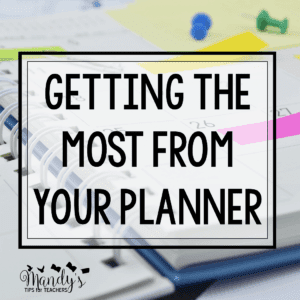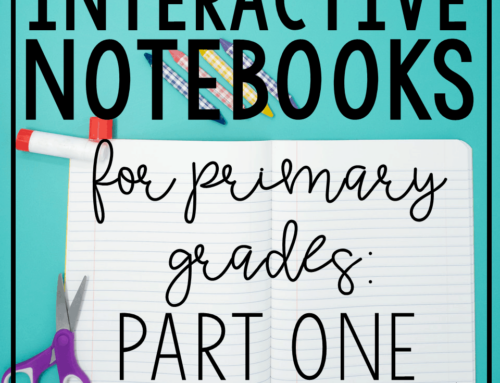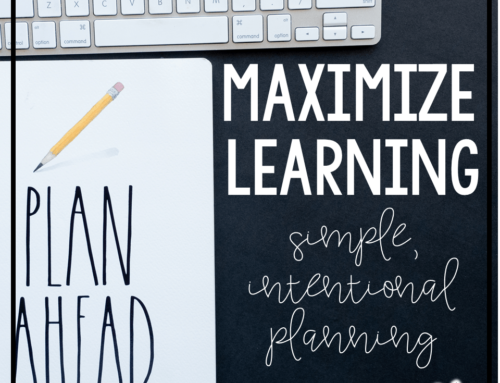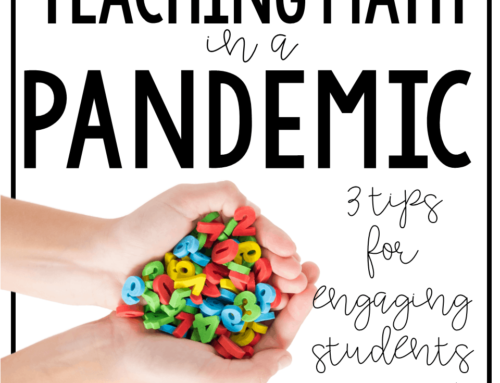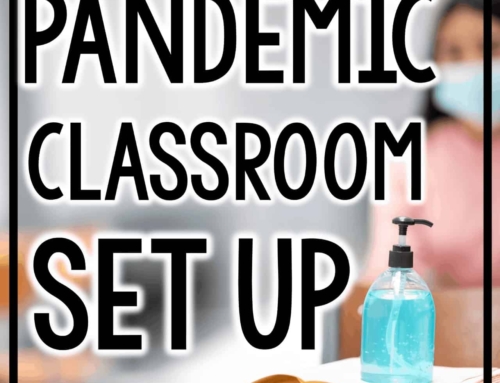When I was in the classroom I worked VERY hard to stay organized. So hard in fact, that I don’t think I was often very efficient. The older I get (and the more responsible I become for my children’s lives and schedules), the better organized I have become.
I was talking to a friend that teaches. She is struggling with organization. She felt her first step was to start using a planner. I was like, “YASSS, GIRL!” My planner has become my best friend. Here are a few tips that I sued in the classroom, OR WISH I had used in the classroom. Hindsight is 20/20, and all that jazz!
Planning is not always pretty.
There are gorgeous planner spreads all over YouTube and Instagram. I catch myself drooling over them every so often. However, I have learned that in my life, planning isn’t always pretty. The purpose of the planner is to organize my thoughts and day. As fun as stickers are, they might not be the most practical for day to day use in your planner.
1.) Pick the planner that best suits YOU.
There are tons of beautiful brands out there. In the past, I have Daytimer planners from Walmart, Erin Condren Planners, and now I use the Happy Planner. When I was teaching, I liked to use the cheap old Daytimer planners. They were often thin, and I could get them a full-size copier pager. This made it easier to carry and store and papers in it if I needed. The Happy Planner and Erin Condren’s are nice because they have a solid coil binding and can easily slip into a purse or bag. It is simply a PREFERENCE.
 2.) Take your planner EVERYWHERE.
2.) Take your planner EVERYWHERE.
Have planner: will travel. How many times did I have to sit in a meeting and get due dates and special events and such, and NOT have my planner? Wayyyyyy too often. I finally wised up. Take your planner to all of your meetings. This makes it easier to reference time frames, due dates for paperwork, days off of school, and so on. Don’t wait. Go ahead and add those dates onto the planner. This will be ONE less thing you have to do when you get back to your classroom. It also makes you look pretty professional, LOL!
3.) Consider using a planner with both monthly and weekly spreads.
This is one thing I DIDN’T do, but wish I did while I was teaching. It is something I have adopted now that I stay at home and it works like a charm. It only took me 40 years of figuring out this adulting gig.
Treat your monthly spread as a way to track all your holidays, due dates, meetings, etc. This way you can have everything in ONE place. It helps frame my mind and know WHAT should be on my to-do list.
Did you also have a gazillions scraps or post-it notes with your to-do list? Me, too. Consider using the WEEKLY spread as a place to record your daily to-do list. This way everything is all in one place, you won’t lose those pesky scraps and post it notes!
4.) Don’t be surprised by meetings and due dates that might creep up on you.
Just like Google Calendar can set email reminders and text reminders, your planner can do a similar task. If you know that report cards are due November 19, then note on your calendar to complete report cards by November 17th. You can even go ahead and transfer onto the weekly to-do list/ spread “Work on report cards,” on November 15-17th. BOOM. Instant organization.
Also, dates can get lost when flipping month to month. Especially if it is the FIRST day of the month. Consider transferring “Meeting on November 1st at 3” on the October Calendar in the blank boxes most calendars provide.
5.) Do you use an electronic plan book?
We were actually required to use an online plan book. I was not a huge fan, to be honest. I tend to remember things MUCH better when I hand write them. That sounds like a whole different blog post, though!
One thing that helped me would be to refer to my paper planner each week before I filled out the electronic plan book. I actually have a column for meetings and important dates. I would type them in the part of the table to help organize me. It was just a simple way to cross-reference.
These are just a few tips to get the most out of your paper planner? Do you have any additional tips? Do you even use a paper planner or have you moved EVERYTHING to Google Calendar?
Mandy Gregory is a 2007 and 2012 Teacher of the Year. She has taught Kindergarten- 4th grades in both the general education and inclusion settings. She is currently a 1st grade Special Education teacher. She is the owner and creator of Mandy’s Tips for Teachers website (www.mandystipsforteachers.com) and has over 13 years of teaching experience. She is married with two beautiful children.

